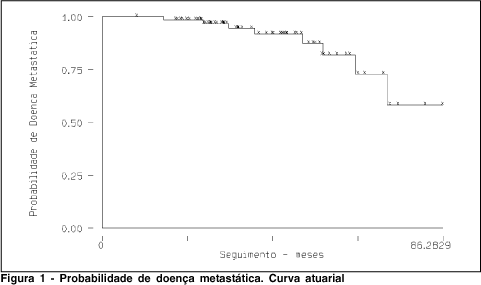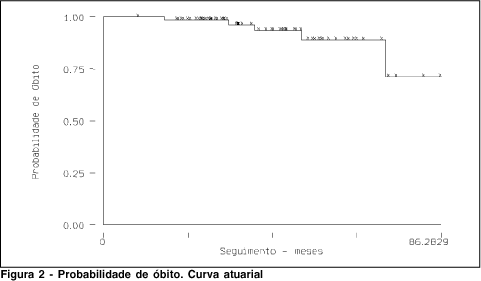Purpose: To determine prognostic factors for local control of uveal melanoma treated by brachytherapy with cobalt 60. Methods: We evaluated indexes of local tumor control, complications, metastatic disease and global survival in 69 uveal melanoma patients treated with brachytherapy with cobalt 60 from November 1988 to October 1994, at the Hospital do Câncer - A. C. Camargo, São Paulo. We confronted these indexes with different tumoral characteristics and brachytherapy techniques for the determination of the best prognostic factors. Results: After treatment decrease in height was observed in 55 (79.9%) lesions, in basal diameter in 46 (66.7%), and in visual acuity in 26 (37.2%). 16 (23.2%) eyes were later enucleated due to failure of tumor control in 10 (62.5%) or complications in 6 (37.5%); enucleations were performed on an average 21.1 months after treatment. The mean follow-up time was 44.3 months (10.1-114.3 months). Metastatic disease occurred in 8 (11.6%) patients and the overall five year survival was 89.1%. Complications occurred in 53 (76.8%) patients and eyeball conservation was accomplished in 53 (76.8%). Prognostic factors associated with eyeball conservation and lower complication indexes were: lesion thickness less than 5 mm; basal diameter less than 10 mm; apex doses higher than 12,000 cGy; apex dose tax higher than 45 cGy/h; basal dose lower than 25,000 cGy; basal dose rate lower than 120 cGy/h; and plaque activity lower than 2 mCi. Conclusion: Tumor size, plaque activity, basal and apex doses and dose rate should be carefully observed in brachytherapy for uveal melanomas in other to optimize its results.
Melanoma; Uveal neoplasms; Cobalt; Prognosis





